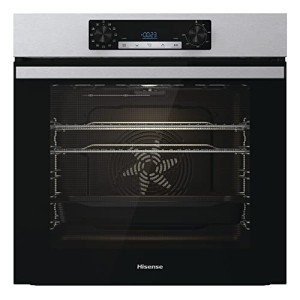Overview
-
Sectors IT Jobs
-
Posted Jobs 0
-
Viewed 7
Company Description
5 Killer Quora Answers To Single Fan Oven
Understanding the Single Fan Oven: A Comprehensive Guide
The culinary world has actually progressed considerably throughout the years, with appliances becoming more advanced and effective. One such improvement is the single fan oven, a kitchen staple for numerous home cooks and professional chefs alike. This article delves into the complexities of single fan ovens, their benefits, and useful tips for use.
What is a Single Fan Oven?
A single fan oven, likewise called a stove, is created to prepare food equally utilizing a fan and an internal exhaust system. Unlike standard ovens that rely mainly on glowing heat, single fan ovens flow hot air around the food, ensuring a constant temperature throughout the cooking process. This feature improves cooking performance and lowers cooking times compared to standard ovens.
How Does a Single Fan Oven Work?
The mechanics of a single fan oven are simple but ingenious. The oven consists of numerous essential parts:
- Heating Element: This produces the heat required for cooking, usually situated at the top and bottom of the oven.
- Fan: Positioned at the back of the oven, this part circulates the hot air around the food.
- Control board: It allows users to set the temperature level and cooking time.
- Thermostat: This gadget displays and preserves the preferred temperature during cooking.
When the oven is switched on, the heating components heat up, and the fan begins to flow the heat uniformly. This makes sure that all sides of the food are exposed to hot air, leading to better cooking outcomes– especially for baked items.
Advantages of Using a Single Fan Oven
Single fan ovens boast a number of advantages, making them popular among culinary enthusiasts. The main benefits include:
1. Even Cooking
- The circulating air avoids cold and hot spots within the oven, permitting food to prepare uniformly. This is especially beneficial for baking pastries, cakes, and bread.
2. Reduced Cooking Time
- By circulating hot air, convection ovens generally cook food quicker than standard ovens. This can cause time savings in meal preparation.
3. Energy Efficiency
- Single fan ovens usually utilize less energy, as they can cook food more rapidly and might require lower temperatures.
4. Browning and Crisping
- The airflow in a single fan oven helps achieve a desirable golden-brown finish on meals, particularly casseroles, roasted vegetables, and meats.
5. Adaptability
- These ovens are capable of a range of cooking designs, from roasting and baking to broiling and reheating leftovers.
Comparing Single Fan Ovens with Traditional Ovens
To much better comprehend the unique qualities of a single fan oven, it’s useful to compare it to a traditional oven. The table below sums up crucial differences:
| Feature | Single Fan Oven | Standard Oven |
|---|---|---|
| Cooking Method | Convection (flowing air) | Radiant heat |
| Cooking Time | Much shorter | Longer |
| Temperature Consistency | More constant | Can have hot/cold spots |
| Energy Consumption | Typically lower | Greater |
| Ideal for Baking | Much better browning and rising | Good for roasting |
How to Use a Single Fan Oven
For optimal outcomes with a single fan oven, think about these useful ideas:
-
Adjust Temperature and Cooking Time:
- When using a single fan oven, lower the cooking temperature level by about 20 ° F (10 ° C) compared to standard recipes. As a guideline of thumb, check for doneness a bit earlier than specified.
-
Usage Shallow Baking Pans:
- Shallow pans permit much better airflow, promoting even cooking and browning.
-
Avoid Crowding the Oven:
- Ensure appropriate area in between dishes for air circulation.
-
Turn Baking Sheets:
- For several trays or pans, rotate them midway through cooking to ensure even heat distribution.
-
Keep the Oven Door Closed:
- Each time the door is opened, heat gets away; prevent unnecessary openings during cooking.
FAQs About Single Fan Ovens
-
Can I utilize regular recipes in a single fan oven?
- Yes, however it’s advised to adjust both the temperature level and cooking time for ideal outcomes.
-
Are single fan ovens more expensive than traditional ovens?
- They can differ in price, but while some designs may be more expensive, their effectiveness can lead to cost savings on energy costs.
-
Can I bake multiple products simultaneously?
- Yes, however spaced out correctly for even air blood circulation. It’s a good idea to turn trays midway through cooking.
-
Do single fan ovens include additional functions?

- Numerous designs feature self-cleaning choices, multiple cooking modes, and clever technology for boosted benefit.
-
Is upkeep different for single fan ovens?
- Maintenance is comparable but be mindful of the fan and guarantee it’s kept clean for ideal efficiency.
The single fan oven stands apart as a remarkable alternative for those aiming to improve their cooking skills and efficiency in the kitchen. Its capability to cook food evenly and quicker can transform the cooking experience, making even the most complicated dishes simple to carry out. By comprehending how to use a single fan oven effectively and leveraging its advantages, home cooks and professional chefs can delight in a more enjoyable and efficient cooking journey.


